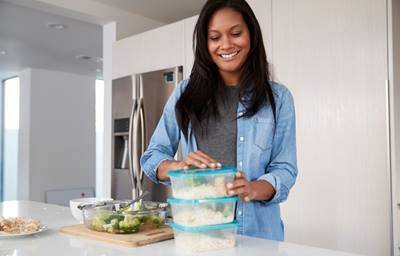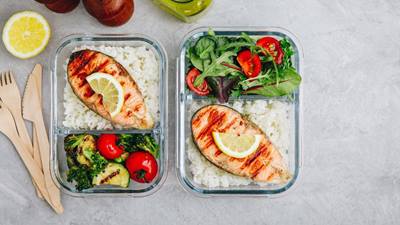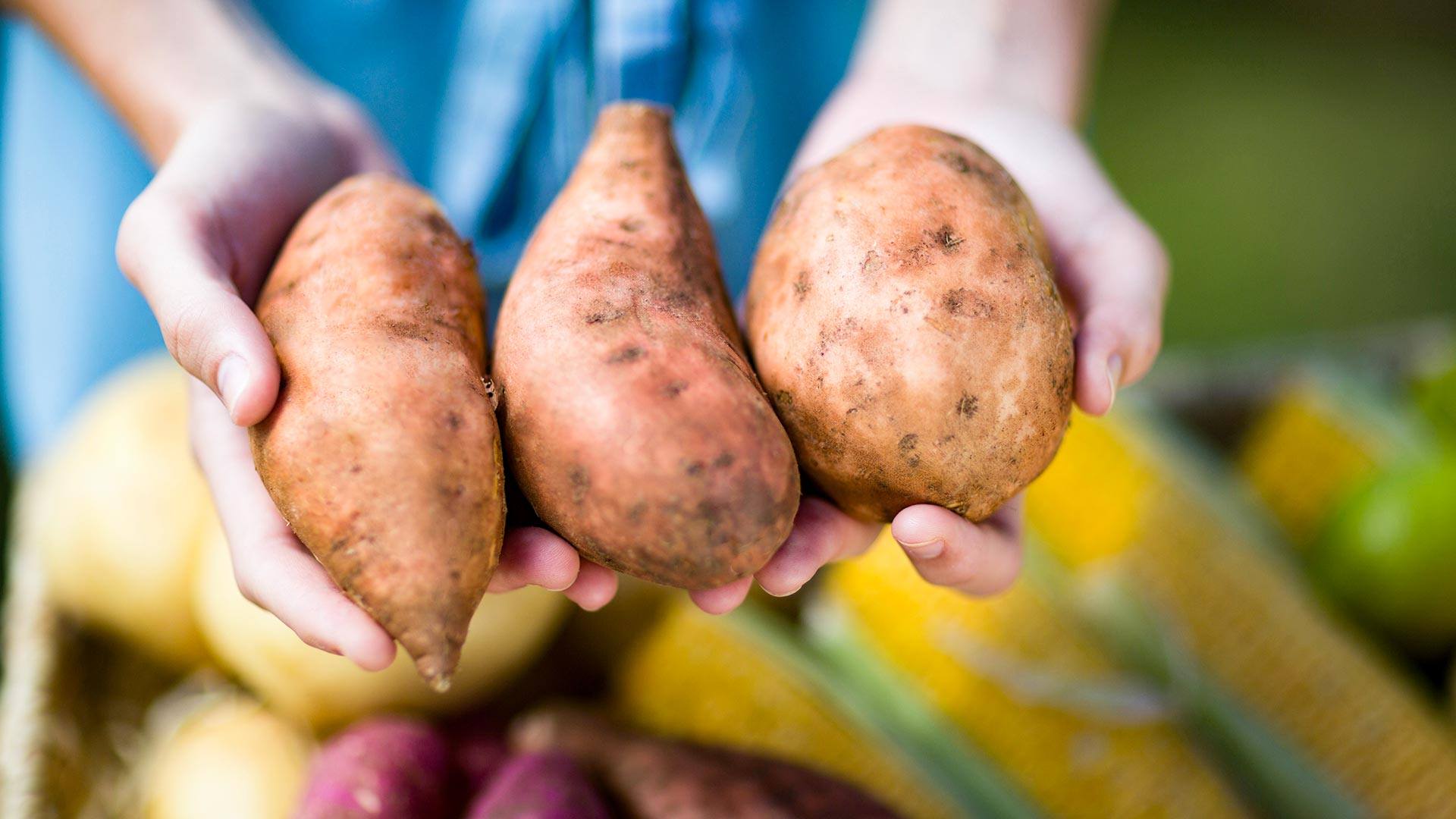Whether you’re looking to lose weight, save money, find more free time, reduce food waste or all of the above, meal prep may be the one weekly habit you’ll want to start. Meal prepping refers to the act of preparing your food ahead of time. By making one large serving at once and then dividing it into appropriate breakfast, lunch, dinner or snack portions, you’ll stockpile a week’s worth of ready-to-go meals.
The Many Benefits of Meal Prep
Meal prep is a great way to cut back on the stress that can lead to unhealthy decisions. Without preparing food ahead of time, it may feel easier to grab takeout or go to lunch with coworkers, rather than eating a healthy meal. Overall, meal prep reduces the temptation to stray from your desired diet.
Meal prep also saves a lot of time and cuts back on your weekly food budget. You may initially spend a few extra dollars stocking up on spices and staples like quinoa, rice, vegetables and meats. The upside, though, is that you get four to six meals out of one batch.
Additionally, meal prep also allows you to choose the foods you like and incorporate as much variety as you want. Depending on your personal needs and work environment, you can even prep foods that don’t require refrigeration or microwaving. You also can prepare multiple meals at a time for children or spouses with particular eating habits.
How to Start Doing a Weekly Meal Prep
First, think about your weekly schedule and where you’ll be during each meal. It’s important to consider what’s available to you before starting prep.  For example, do you have access to a fridge, microwave, utensils or space to sit down?
For example, do you have access to a fridge, microwave, utensils or space to sit down?
Next, try to plan your meals to be both healthy and delicious. You’ll even want to make your grocery list based on your meal plan. To begin with, always consider your personal preferences. You shouldn’t force yourself to eat a vegetable or other item that you hate for a whole week. While you should strive to eat vitamin- and protein-packed whole foods, it’s easy to give up on meal prep if you don’t enjoy the food you’ve prepared.
Next, when shopping, only buy the foods on your list. By making last-minute additions or swaps, you’ll likely change the caloric and nutritional makeup of each prepared meal. You’re also more likely to make spontaneous temptation-based food choices at the grocery store, which can lead to unhealthy eating. You could even spend more than what you budgeted for.
After prepping and cooking the food, keep it in sealed containers so it doesn’t go bad. Keep in mind that this process should take two or three hours total each week, although you may be slower in the beginning, and only eat each meal at the time you’ve intended it for.
What to Include
When starting meal prep, keep these ingredient guidelines in mind:
- Try to include 25-30 grams of protein with each meal. That’s the equivalent of about 4 ounces of chicken breast, fish, pork or beef.

- Include at least three different vegetables with your meals. Frozen vegetable medleys work fine.
- Add healthy fats or grains. Always cook your veggies in a healthy fat, such as olive oil, and even drizzle a tablespoon on top for extra flavor. Include complex carbs like sweet potatoes, brown rice or quinoa for added fiber.
- Remember, you should plan your drinks, too! Try brewing green tea and sweetening it with stevia instead of honey or sugar.
A Great Example of a Weekly Meal Prep Option
All portion sizes need to be adjusted based on your height and ideal weight. Consult with a physician, nutrition specialist or personal trainer for assistance in setting your own personal nutrition and calorie guidelines.
Breakfast: 3 eggs, half an avocado and a protein shake
Snack: 4 squares of dark chocolate and 1 ounce of raw, unsalted almonds
Lunch: 1 cup quinoa, 1 cup frozen vegetable medley, 6-8 ounces wild-caught fish (such as sockeye salmon, ahi tuna or swordfish) or chicken or pork
Snack: 1 cup blueberries, blackberries or raspberries with 6-8 ounces plain Greek yogurt
Dinner: 1 bowl turkey chili (cooked in a crockpot or pressure cooker with kidney beans, black beans, green bell peppers, mushrooms and lots of garlic and turmeric)
Learn More About the Orlando Health National Training Center
The Orlando Health National Training Center, on the campus of Orlando Health South Lake Hospital, provides comprehensive wellness programs, events and training services to support our community and athletes in their achievement for health and performance excellence.
Learn more










